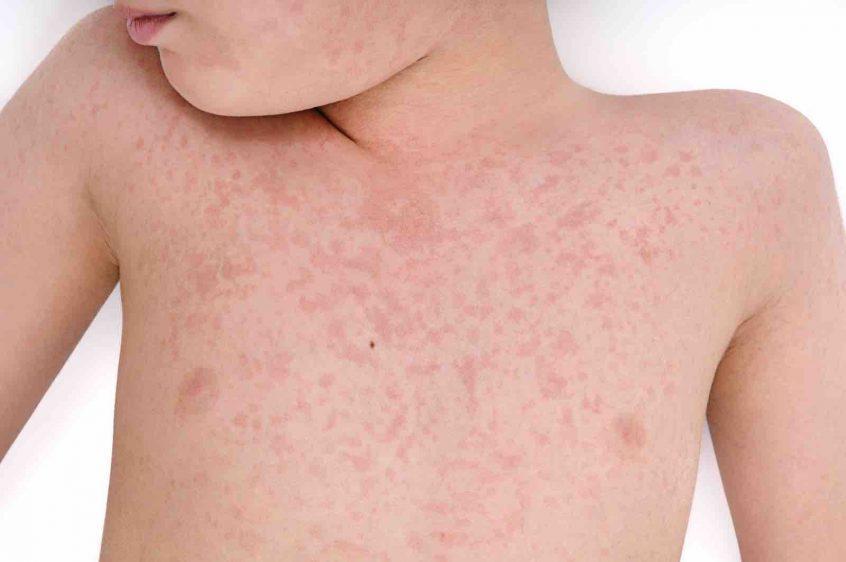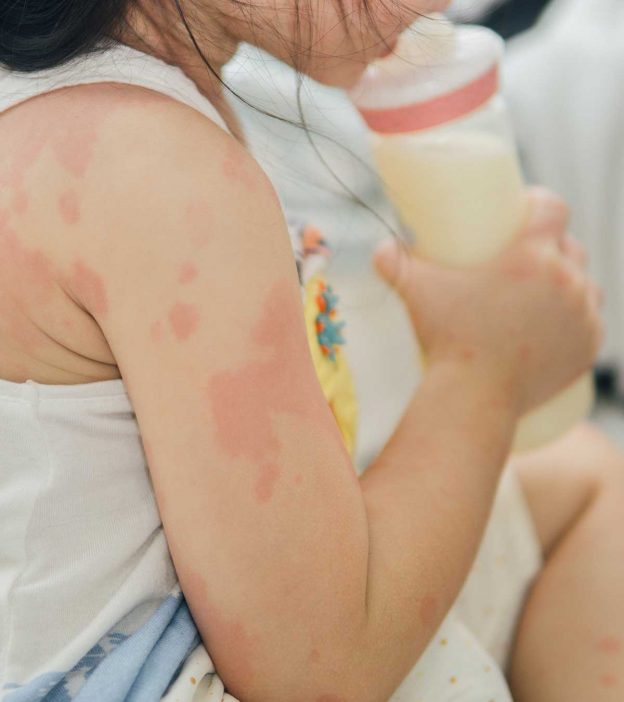Dr.A.Deepak Thirunavukkarasu MBBS, DDVL, Fellow in Medical Cosmetology
Paediatric Skin Allergy Treatment in Chennai
Call Us
+91 7200148548
Email Us
cutikidz2022@gmail.com
Book Your appointment
Why Choose CutiKidz Skin Clinic for Paediatric Skin Allergy Treatment in Chennai ?
Choose CutiKidz Skin Clinic for Paediatric Skin Allergy Treatment in Chennai for Expert Care Tailored to Your Child’s Needs. Our Dermatologists Specialize in Gentle and Effective Solutions for Children’s Skin Allergies, Providing Compassionate Care in a Child-Friendly Environment. With a Focus on Diagnosis, Prevention, and Management, We Ensure Your Child Receives the Best Possible Treatment. Book an Appointment Today and Give Your Child the Relief They Deserve
What is Paediatric Skin Allergy
Pediatric skin allergy refers to allergic reactions that affect the skin in children. These reactions can result from various triggers such as foods, environmental allergens, insect bites, or contact with irritants. Symptoms may include redness, itching, swelling, rash, or hives. Diagnosis and treatment typically involve identifying triggers, managing symptoms, and preventing future reactions.

Solutions for Paediatric Skin Allergy

Emollients and Moisturizers
CRegular application of moisturizing creams or ointments to keep the skin hydrated and help repair the skin barrier

Oral Medications
In some cases, oral antihistamines or other medications may be prescribed to manage severe itching or allergic reactions
Symptoms of Pediatric Skin Allergies
Symptoms of pediatric skin allergies can vary depending on the type of allergy and the child’s individual sensitivities. Common symptoms may include:
Redness: The affected skin may appear red or flushed.
Itching: Itching, also known as pruritus, is a hallmark symptom of allergic skin reactions. It can range from mild to severe and may be accompanied by a strong urge to scratch.
Rash: Allergic reactions can cause various types of skin rashes, including eczema (atopic dermatitis), hives (urticaria), or contact dermatitis. These rashes may appear as raised bumps, patches of dry or inflamed skin, or fluid-filled blisters.
Swelling: Swelling, also known as edema, may occur in the affected area and can range from mild to severe.
Bumps or Blisters: Allergic skin reactions may manifest as small bumps, welts, or fluid-filled blisters on the skin’s surface.
Dryness or Scaling: The skin may become dry, rough, or scaly, particularly in cases of eczema or allergic contact dermatitis.
Pain or Discomfort: In some cases, allergic skin reactions may cause pain, burning, or discomfort, especially if the skin is inflamed or irritated.
Oozing or Crusting: Severe allergic reactions may lead to oozing, weeping, or crusting of the skin, particularly if the skin becomes damaged from scratching.
Secondary Infections: Persistent scratching of allergic skin lesions can increase the risk of secondary bacterial or fungal infections, leading to symptoms such as increased redness, warmth, swelling, and pus drainage.


Types of Pediatric Skin Allergies
Pediatric skin allergies can manifest in various forms, depending on the allergen and the child’s immune response. Common types of pediatric skin allergies include:
Eczema (Atopic Dermatitis): Characterized by red, itchy, and inflamed patches of skin, often appearing on the face, elbows, knees, and neck. Eczema is commonly triggered by allergens such as foods, pet dander, or environmental factors like pollen or dust mites.
Allergic Contact Dermatitis: Occurs when the skin comes into contact with an allergen or irritant, resulting in redness, itching, and sometimes blistering or peeling. Common triggers include certain metals (e.g., nickel), cosmetics, fragrances, latex, or plants like poison ivy.
Urticaria (Hives): Presents as raised, itchy welts or bumps on the skin that can vary in size and shape. Hives are often triggered by allergies to foods, medications, insect bites, or environmental factors.
Angioedema: Similar to hives but involves swelling in deeper layers of the skin, typically around the eyes, lips, tongue, or throat. Angioedema can be triggered by the same allergens that cause hives.
Allergic Rashes: Allergic reactions to medications, foods, or insect bites can cause various types of rashes, including erythema multiforme, fixed drug eruption, or allergic purpura.
Atopic Dermatitis (Allergic Dermatitis): Refers to a chronic, inflammatory skin condition characterized by dry, itchy, and scaly skin patches. Atopic dermatitis is often associated with allergies to foods, environmental allergens, or family history of allergic diseases.
Allergic Skin Reactions to Insect Bites/Stings: Some children may develop allergic reactions, such as localized swelling, redness, or hives, in response to insect bites or stings from bees, wasps, mosquitoes, or ants.
Allergic Skin Reactions to Foods: Certain foods can trigger allergic reactions in susceptible individuals, leading to symptoms such as hives, swelling, itching, or eczema flare-ups.
Causes of Pediatric Skin Allergies
- Allergens: Substances that trigger allergic reactions in the skin can include:
- Foods: Common food allergens such as peanuts, tree nuts, milk, eggs, soy, wheat, fish, and shellfish.
- Environmental Allergens: Pollen, mold, dust mites, pet dander, and certain plants.
- Insect Venom: Bee stings, wasp stings, or bites from mosquitoes, ants, or other insects.
- Latex: Found in products such as gloves, balloons, and elastic bands.
- Metals: Nickel, found in jewelry, clothing fasteners, and certain coins.
- Medications: Antibiotics (e.g., penicillin), non-steroidal anti-inflammatory drugs (NSAIDs), and anticonvulsants.
- Irritants: Substances or environmental factors that can irritate the skin and trigger allergic reactions include:
- Harsh soaps, detergents, or cleaning products.
- Fragrances, preservatives, or chemicals in skincare products or cosmetics.
- Fabrics or clothing materials that cause friction or irritation.
- Exposure to extreme temperatures or humidity.
- Genetic Factors: Children with a family history of allergic diseases, such as asthma, eczema, hay fever (allergic rhinitis), or food allergies, may have an increased risk of developing skin allergies.
- Immune System Response: Allergic skin reactions occur when the body’s immune system mistakenly identifies harmless substances as threats and mounts an immune response, leading to inflammation, itching, and other symptoms.
- Skin Barrier Dysfunction: Conditions that compromise the skin barrier, such as eczema (atopic dermatitis), can increase susceptibility to allergens and irritants, leading to allergic skin reactions.
- Environmental Factors: Factors such as pollution, climate, and exposure to ultraviolet (UV) radiation can influence skin sensitivity and contribute to the development of skin allergies.
